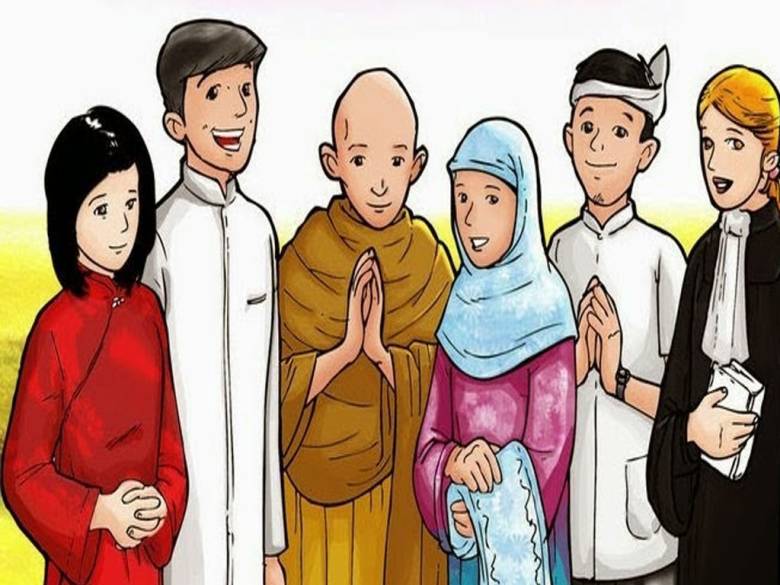The New Order Story [2] The Unpredictable of Soeharto's Wordless Communication
![The New Order Story [2] The Unpredictable of Soeharto's Wordless Communication](https://assets.ytprayeh.com/img/6e15974a66095ca/bc2e6-soeharto-dan-try-sutrisno-5bfd609caeebe11ca7136dc5.jpg)
Take a look at this historic photo!
Someone was helping "drag" President Soeharto with a stick so he could cross to higher ground. That someone is his adjutant. The adjutant was Try Sutrisno.
The incident recorded through this photo occurred around 1974, when Try was appointed as Pak Harto's adjutant. It was when he became an aide that Pak Harto started to like Try. Whereas in the future Try actually accompanied Soeharto as Vice President, this historic photo appears again with a miscellaneous analysis.
Meanwhile, observers say that this is the style of communication developed by Soeharto, nonverbal communication, without words or the cool language of non-verbal communication. The communicant or the interlocutor, whoever he is, is forced to understand this wordless communication.
From a cultural perspective, Pak Harto's style of communication is called "high context culture", which simply distinguishes it from "low context culture". Simply put, Pak Harto's style of political communication is often vague (even hidden), difficult to predict and difficult to understand due to the lack of words spoken.
The interlocutor, who is usually from his closest circle of friends, is "forced" to understand the gesture of his body or facial expression when expressing whether he likes or dislikes, agrees or disagrees with the options presented. This high-context cultural communication style is characterized by implicit messages, sometimes poetic, also dreamy, indirect and not straightforward, also full of pretense.
The interlocutor simply captures hand movements, voice intonation, body movements, facial expressions, eye gaze or other physical movements of the body. Then, understand what Soeharto said or what he really wanted.
Compare this with the low context cultural communication style which is characterized by explanative (explaining in detail), explicit or direct / linear / to the point). His speaking style was direct, straightforward and straightforward. Many say they tend to be rude and strange.
However, from time to time, Soeharto also spoke in a straightforward manner when he threw the threat of "thump", for example, at anyone who opposed the constitution for his wish to replace himself as President of the Republic of Indonesia, which had begun to be voiced by critical people, especially members of "Petisi 50" and a number of student movements.
However, in frequency, Suharto tended to use this "high context culture" style of communication, which made the New Order full of puzzles. Soeharto's own puzzle. The choice of words in Suharto's communication was very subtle and subtle. The intonation of the voice is not loud, but the weight is felt or can be felt by the interlocutor.
Muladi, who once served as deputy chairman of the Commission on Human Rights in the Suharto era, once revealed that whether Suharto talked about it depends on whether he likes it or not, likes it or not, with his staff or staff reports.
If Suharto didn't like it, he chose not to comment. There are sign languages that must be understood if he is not pleased. In fact, according to Muladi, if Suharto ordered his staff, he never clearly expressed it and it all depends on the interpretation of those who hear it.
Talking about non-verbal communication, the stick in the photo is translated as "leadership relay", so the free translation is that Suharto will one day give his leadership to Try Sutrisno, as the President of the Republic of Indonesia of course.
Then when Try was one step away from replacing Suharto when he sat as Vice President, the scenario changed and Try was someone who knew himself quite well.
Just to remind you, at that time, Try was promoted as vice president by members of the MPR from the ABRI faction, who were then attacked by PPP and PDI. Only Golkar has not stated its support. Soeharto did not like the "fait accompli" (preceded). Of course he's angry. However, because Golkar and ABRI are both political instruments of power, he does not want widespread divisions. Try finally became Vice President replacing Sudharmono.
Baca Juga: The New Order Story [1] Watch Out, Do Not Publish!
So, when Try's name graced the national media coverage in 1993 due to the maneuvers of members of the ABRI faction MPR who were agreed by the PPP and PDI, people recalled this historic photo: "relay of national leadership from Soeharto to Try Sutrisno".
Soeharto may well have understood the meaning of a color photo when Try was his adjutant. That's why at that time there were rumors that Soeharto would prefer to choose BJ Habibie who was smart but very loyal or to reappoint Sudharmono, rather than having to choose Try Sutrisno, who of course was "one step" from becoming a national leader to replace himself.
However, among the influential ABRI elite and retired officers at that time, Sudharmono's figure was not liked, even since Soeharto appointed him as Vice President in 1988.
It was to show his displeasure that maneuvers were carried out by members of the MPR from the ABRI faction, which at that time was still permitted.
This is also nothing but wordless communication from politicians, that proposing a name means wanting Suharto to choose the cawapres they offer, namely Try Sutrisno, and not the others.
As for Try Sutrisno himself, he knew himself ahead of the succession in March 1998 when Suharto chose BJ Habibie as his new vice president. Meanwhile Soeharto still has the desire to regain power in the next five years until 2003 (and after that he can be re-elected). It's just another history of speech; Soeharto declared his resignation on May 21, 1998.
And, the leadership relay as depicted in the photos discussed never actually materialized. It was BJ Habibie who later replaced President Soeharto.
***
Previous story: The New Order Story [1] Watch Out, Do Not Publish!



